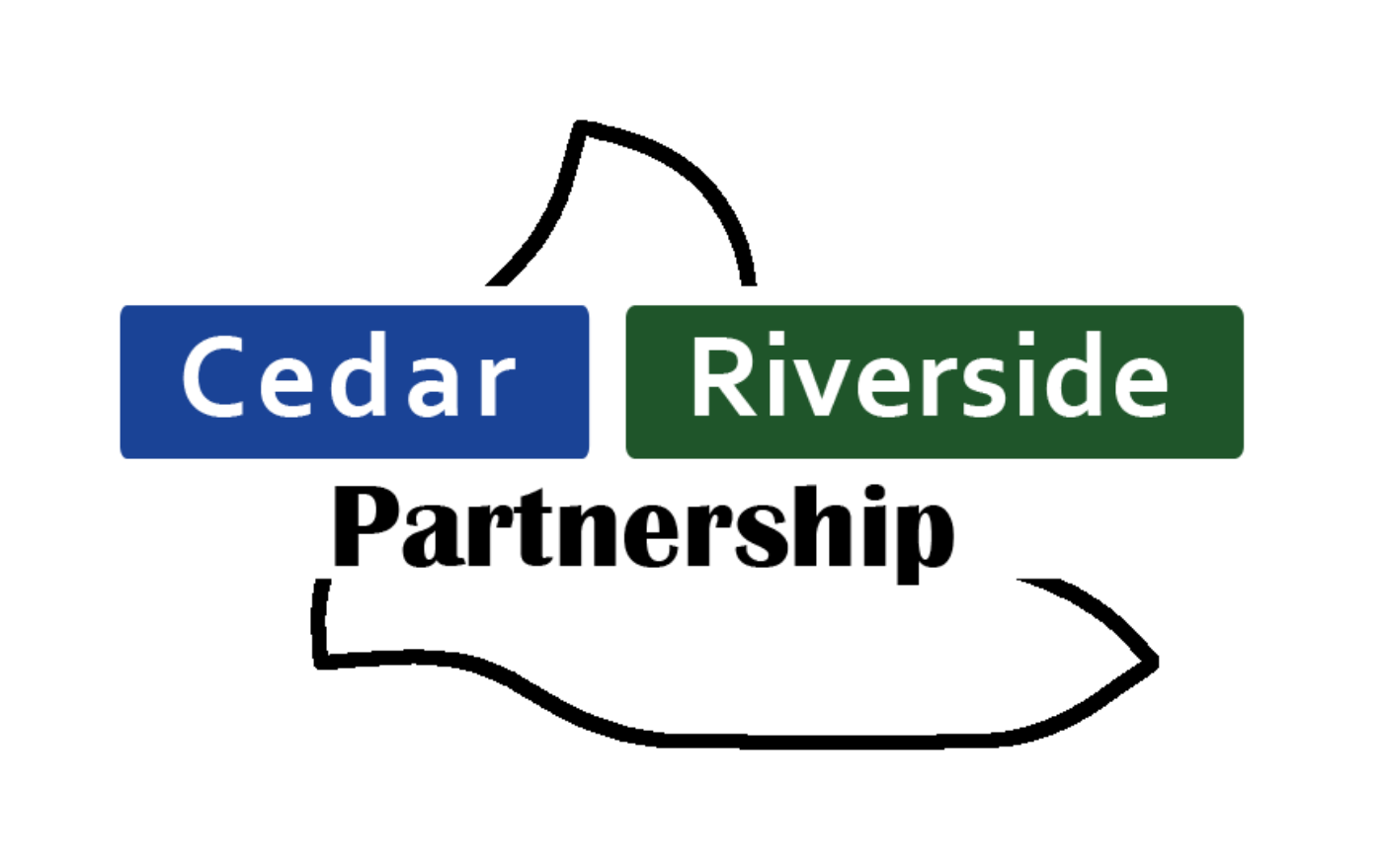On July 15, 2009, the Cedar Riverside Partnership adopted a resolution to endorse an integrated framework for infrastructure investments and land use planning in the Cedar Riverside neighborhood. This resolution was based on goals outlined in the Cedar Riverside Small Area Plan.
Nearly three years later, on November 16, 2012, the Partnership formally supported a short-term plan to fulfill Americans with Disabilities Act (ADA) requirements on Cedar Avenue. The Partnership also endorsed the long-term vision for Cedar Avenue outlined in the West Bank Area Implementation Study. Concerns about Cedar Avenue included pedestrian safety, pedestrian comfort, and aesthetic appearance. The Partnership’s commitment to Cedar Avenue and to community member engagement served as the foundation for the discussion of Cedar Avenue reconstruction. Pedestrian walkways were of primary concern, and the group proposed new sidewalks, curbs, lighting, trees, tree grates, and efficient district stormwater management technologies.
“[Our goal is to] develop a new, high quality streetscape from Seven Corners to I-94, including new sidewalks, durable and attractive detailing, furnishings, lighting, tree and containerized plantings, structural soils, permeable paving, etc.”
The complex roadway intersections at Cedar Ave and Riverside Ave and at Seven Corners were also discussed. Reconstruction or reconfigurations of crosswalks, streets, turn lanes, and pedestrian signals were among the list of suggested safety improvements. To improve Cedar Avenue, the Partnership suggested that the roadway be changed from four to three lanes wide, and that the bus pullout be removed.
Over the course of the reconstruction in 2014, the Partnership’s focus on pedestrian safety and comfort was unwavering. The western sidewalk on Cedar Avenue was expanded to 15.5 feet in width, allowing space for pedestrians to stroll, gather, and relax. Additional space for vibrant trees and plants beautified Cedar Avenue sidewalks, added shade over the pedestrian zone, and created space for snow storage. Contemporaneously, an 8-foot parking lane was added to the west side of Cedar Avenue to replace the ‘curb reaction zone’ that preceded it, and the east side parking space was reduced from 10 to 8 feet in width.

